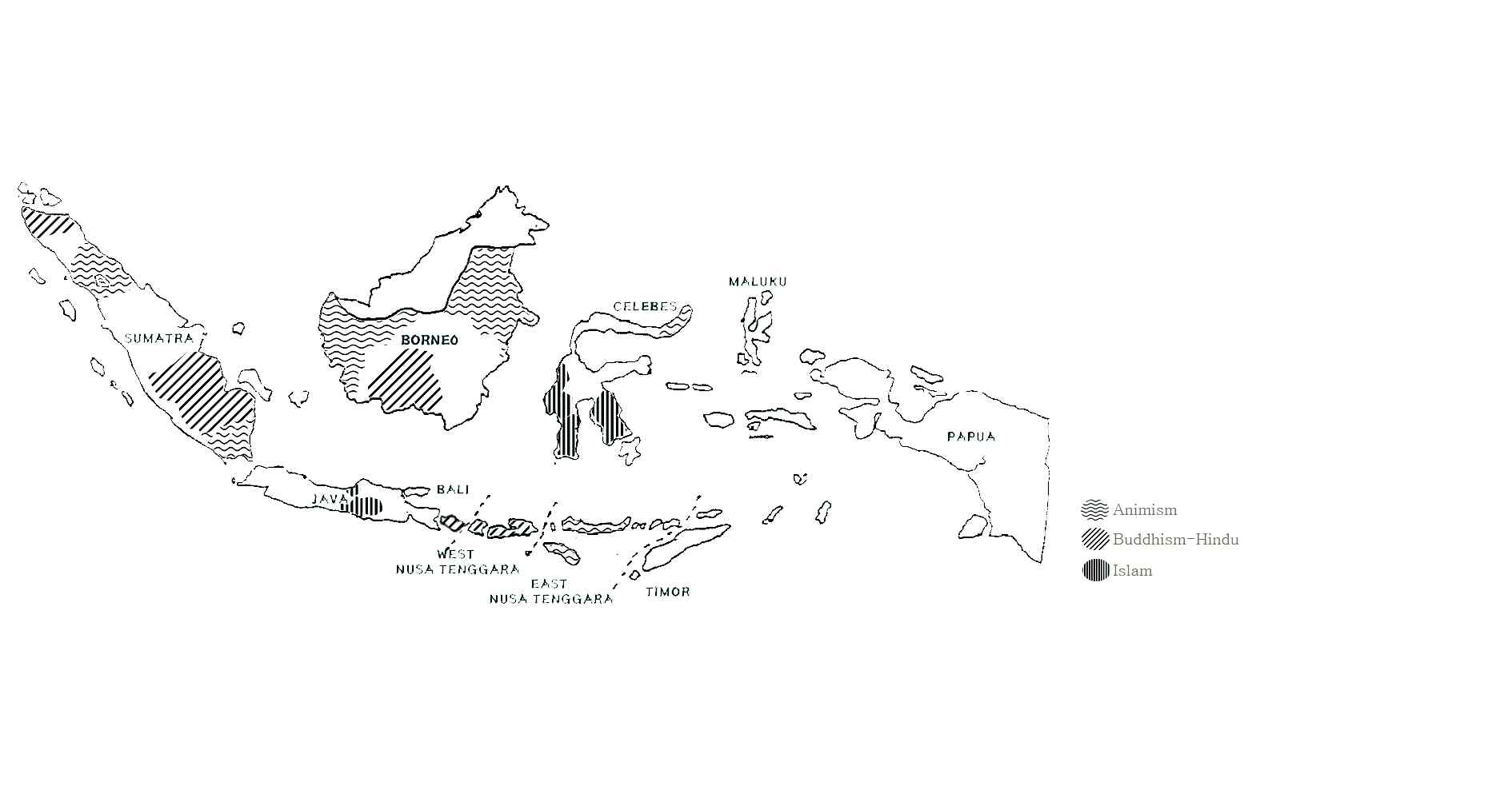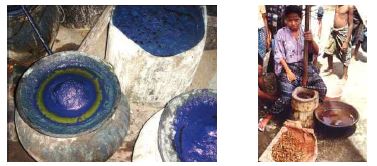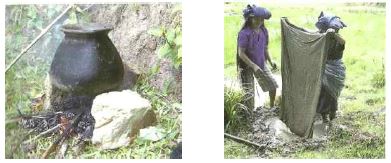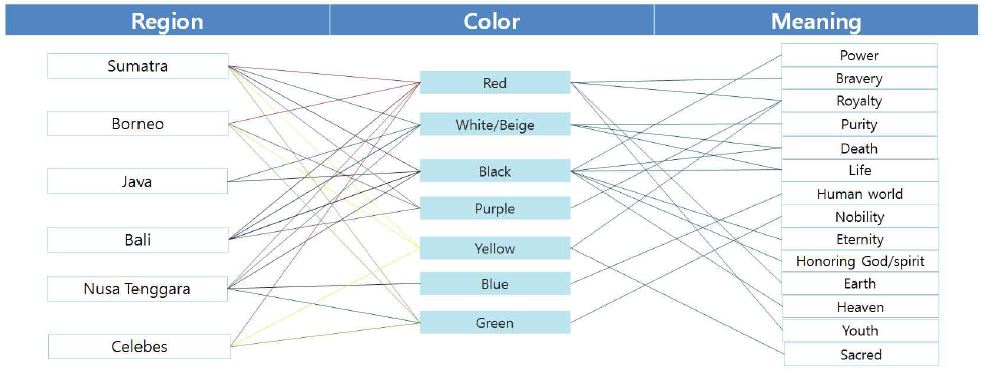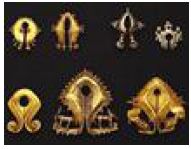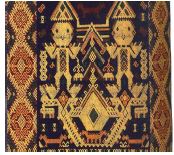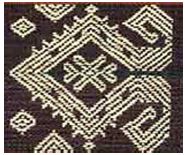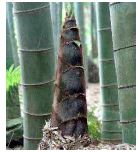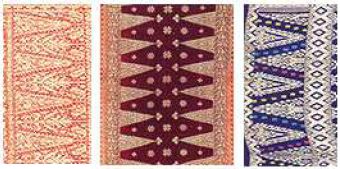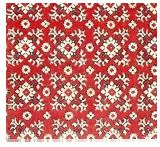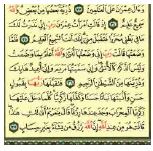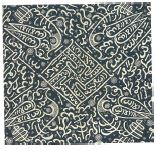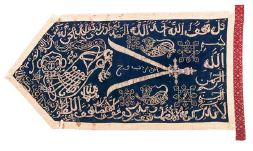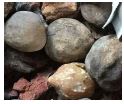
An Analysis on Characteristics of Ancient Indonesian Textiles (I) : Focus on Period, Religion, Region, and Color of the ‘Sacred Cloths’
Abstract
Research on ancient Indonesian ‘sacred cloths’ is essential since it shows a different perspective into Indonesian identity. Based on its function, the ‘sacred cloths’ are either made as a medium for religious ceremonies or as a medium for the living and the dead. The consuetude of preparing and creating the ‘sacred cloths’ are done to achieve the finest ‘sacred cloths’ worthy to be presented to God. The research aims to analyze the characteristics of ancient Indonesian textiles and to focus on the 'sacred cloths.' The research is divided into two parts, and this paper is the first part. The paper analyzes the characteristics of ancient Indonesian textiles by focusing on the period, religion, region, and color of the ‘sacred cloths.’ The subsequent research analyzes the characteristics of ancient Indonesian textiles by focusing on the techniques and the patterns of the ‘sacred cloths.’
In this first part of the main research, the analysis reveals that animism developed in various ways in Indonesia from 500 BC to AD 1800. It was also as kingdoms of Buddhist, Hinduism, and Islam. The changes of religion may differ according to its region. Indonesian regions are divided into six big regions that produce textiles. These islands are Sumatra, Borneo, Java, Celebes, Nusa Tenggara, and Bali. By space and time, the colors of Indonesian textiles represent the ideology of one religion. Indonesia produces primary colors of red, yellow, and blue(RYB). The colors are produced by extracting leaves of Indigo, Indian Mulberry root shell, Sappanwood’s branches, Candlenut fruit, Turmeric root, and Mangosteen rind. Indonesia is a religious country, therefore the meaning of creating each ‘sacred cloth’ shows piety of the maker and the wearer.
Keywords:
ancient indonesian textiles, characteristics, colors, religion, region, sacred cloths키워드:
고대 인도네시아 직물, 특징, 컬러, 종교, 지역, 신성직물Ⅰ. Introduction
1. Background Information
Indonesian textiles are starting to develop into the international market. However, the essence and importance of each textile needs be known since it holds the identity of the country. Indonesian sacred cloths have been developed along with the secular cloths. The differentiation of both cloths can be seen through research. Over history, the journey of Indonesian sacred cloths and their characteristics can be analyzed.
The Indonesian Archipelago is spread over more than 17,500 islands, of which 6,000 are inhabited. The nation is rich in natural resources and the population is comprised of more than 300 ethnic groups. Since prehistoric era in AD 100, traders from China, India, and Arabia came to the islands to trade for spices, forest products, and textiles(Gillow & Dawson, 1995). Trading led to a major foreign influence in the area, resulting in the creation of many small and large kingdoms until 1800. The most significant influence from these external cultures was religion. When weaving is considered a religious act, religion affects the aesthetics of the textiles. The fertile soil produces plants that are used as dyeing materials. In addition, the philosophy and religion of an ethnic group affect the significance of color. The first important foreign influence on textiles appeared during the Dong Son Era in 700 BC, followed by Buddhist and Hindu influences beginning in AD 100 and Islamic influence from AD 1200 until AD 1800(Wagner, 1959).
Textiles play an important role in Indonesian society. The contexts that give value to Indonesian textiles is that they are made of high-quality materials and craftsmanship and they possess deep meanings(Hauser-Shaublin, 1991). The process of creating a textile is an act of piety.
2. Literature Review & Research Proposition
The literature review examines 10 books and eight papers that are relevant to the characteristics of ancient Indonesian textiles. Subagiyo (1994) claims that historical textiles are challenging for an inexperienced observer to analyze. His research created a new method to classify Indonesian textiles focusing on the similarities and dissimilarities between textiles and the method of detailed structural, material, and technical analysis.
Anas(2007) argues that in Indonesia, many traditional textiles have been transformed from fabrics made solely for serving customs into products for the outside world. This phenomenon applies to the Ikat textiles called Hinggi in East Nusa Tenggara. From 1970-2000, the design aspects underwent qualitative changes in aspects of shapes, styles, arrangements, colors, and themes. The endless variations create a timeline and served as the basis for the characteristics of Sumba textiles.
Widiawati(2009) analyzes Indonesian traditional materials and dyeing, also comparing traditional natural dyes with modern synthetic ones. Because of environmental concerns, natural dyes have been revived by enhancing the textiles’ characteristics, minimizing the degradation of nature and fulfilling the needs of the sacred cloths.
The literature review reveals that previous researchers focused on modern Indonesian textiles and secular cloths. In contrast, this research focuses on ancient Indonesian textiles and sacred cloths.
3. Research Aim and Methodologies
The primary aim of this research is to analyze the characteristics of ancient Indonesian textiles, focusing on the sacred cloths. This research is divided into two parts. This paper, which constitutes the first part, proposes to analyze the characteristics of ancient Indonesian textiles by focusing on the period, religion, region, and color of the sacred cloths. The second part proposes to analyze the characteristics of ancient Indonesian textiles by focusing on the techniques and patterns of the sacred cloths.
The research will address three fundamental questions. First, how did ancient sacred Indo- nesian textiles develop? Second, how can ancient Indonesian sacred cloths be characterized? Finally, what are the characteristics of colors in the sacred cloths?
The diverse periods, religions, and regions play an important role in determining the characteristics of the sacred cloths. These cloths developed their range of colors, techniques, and patterns from 500 BC until 1800 AD. Religion has preserved the sacred cloths by encouraging their production and use through the present day. The research begins by analyzing the range of ancient sacred cloths by grouping textiles according to six regions where they were produced: Sumatra, Java, Borneo, Celebes, Bali, and Nusa Tenggara. Each of these regions is characterized by specific ethnicities, religions, and dyeing materials. In addition, religion contributes to color selection and the cultural terms that is associated with dyeing and color meaning. This paper encompasses both the literature review and field research. Observations were conducted in the Museum of Bali and the Indonesian Museum of Textiles.
Ⅱ. Period, Religion, Region and Ancient Indonesian Textiles
Ancient Indonesian textile development cannot be discussed independently of period, religion, and region. Around 2500 BC, Indonesian ancestors came from Yunnan in southern China and settled in the archipelago(Kartiwa, 1987/1993). The first basic weaving appeared in the form of plaiting made from natural fibers such as pandanus leaves, bamboo reeds, and rattan(Kartiwa, 1987/1993). These items were used primarily as containers for storing goods.
Around 1500 BC, the Indonesian ancestors created a monumental style of art, which is a type of art made by creating big statues that combine the concept of function and size. The religion of animism expanded during this era. People started to believe in the mysticism of the living and the dead also worshiping the ancestors and deities(Richer & Carpenter, 2011; Heine-Geldren, 1945). Textiles were slowly used as religious medium during this period.
The Dong Son(now known as Vietnam) era started in 500 BC. It was the first era in which Indonesian textiles were influenced aesthetically by its culture, as evidenced by the geometric patterns seen in nekara(a kind of sacred drum) and functionally as the sacred cloths. In this period the sacred cloths were believed to possess a power that gave comfort and confidence in the people’s life. The sacred cloths also functioned as a medium to God during religious ceremonies as well as a medium between the living and the dead. This personal connection between textiles and humans underlies the importance of the sacred cloths. Historians believe that the knowledge of weaving was taught by Tai-speaking people associated with the Dong Son culture (Howard, 2008). During this period weavers used natural dyes with dark tones. Dyeing the cloths was a time-consuming process. The patience exhibited by the weavers represented a devotion to their ancestors. This influence is still seen on the sacred cloths made in Sumatra, Kalimantan, Nusa Tenggara, and Sulawesi.
In AD 400, Hindu Kingdom in the name Taruma appear in Java(Wagner, 1988/1959). During AD 800 century, the Buddhist kingdom of Sriwijaya ruled most of Southeast Asia; namely, Java, Sumatra, Borneo, Cambodia, Thailand, and the Malay Peninsula(Wagner, 1988/1959). The kingdom’s central regime existed in south Sumatra, while the Sailandra kingdom existed in Java. and marks an important developments during this period were the introduction of new materials of silk and gold threads and the new technique of Songket(supplementary weft). Lavish and festive colors were introduced to reflect the richness of the kingdoms. These changes are seen in regions such as parts of Sumatra, Kalimantan, and Bali. “Buddhist and Hindu influence cannot be separated since there was a syncretism between the two religions developed by time”(Kartiwa, 1987/1993, p.6).
The coming of Islam occurred during AD 1200. Islam spread to Java and Sumatra, introducing plaid or checkered Sarongs(plain weave) and Batik in Java, Jambi, and Palembang (Sumatra). Other regions retained their animistic religions. Meanwhile, the Islamic kingdoms in Sumatra, Nusa Tenggara, Sulawesi, Java, and Bali used dark-toned natural dyes in their textiles with floral and animal pattern and the restriction of human pattern. The Indian state of Gujarat, which is an Islam region, introduced the Patola pattern(repetitive) and Double Ikat technique(Gillow & Dawson, 1995) to Bali by trading goods. Despite the influence of Islam in Balinese textiles, however, the region continued to practice Hinduism.
Ancient Indonesia textiles died out when the Dutch colonialized Indonesia around AD 1800. Most of the textile design elements had to change to accommodate Dutch taste. Modern techniques were introduced to accelerate the processes of creating patterns and weaving textiles. In addition, due to the influence of Christian missionaries, remote areas that were not important to the trading system converted their beliefs from Animism to Christianity. These changes also appear in the textiles. Dutch colonization marks the dividing line between ancient and modern Indonesian textiles <Fig. 1>, <Table1>.
Ⅲ. Analysis of the Sacred Cloths by Religion and Region
1. Definition of the Sacred Cloths
Ancient Indonesian textiles are analyzed through the prism of religion and region. Based on their function, they are categorized as either secular cloths or sacred cloths. The secular cloths have more flexible functions and are used daily by all social groups with no prohibitions by the local traditions. According to the cultural biography of Appadurai(1986), the secular cloths are a homogeneous commodity and their value helps to increase the economy.
This research claims that the sacred cloths are a special type of textiles that possess a certain power. The cloths accompany the journey of a human life as they are used in several ceremonies related to nativity, matrimony, and mortality. For nativity, the cloths are used to wrap the baby during his or her birth and again on the baby’s three-month birth anniversary. At matrimony, these sacred cloths are worn by the bride and groom and later passed down bt hereditary to be worn during the next marriage ceremony. Regarding mortality, the cloths were used to wrap the deceased before burial or during the cremation. The finest textiles are kept as an heirloom and are presented to the gods on ceremonial events. They are carefully kept in baskets and stored in the attic to be used only on specific occasions until they decay(Judi & Kusakabe, 2014).
To use, clean, and store the sacred cloths, some ethnic groups follow certain rituals. A process of prayer, fasting, and religious customs guides the making of the cloths. Creating the cloths requires time, skill, and patience. From the beginning, a weaver needs to meditate to decide which pattern to use. Binding and dyeing the yarn to achieve the perfect sacred cloths are difficult and time-consuming processes.
The sacred cloths are not produced solely for physical use. Rather, they are hung for good luck and fortune, for a healing process, and for religious rituals(Coleman, 2008; Warming & Gaworski, 1987). According to Appadurai(1986), each cloth is a singular item that the weaver keeps for personal use. It becomes a commodity when it is sold to others. In summary, the sacred cloths are made to protect and guide humans.
2. The Sacred Cloths, Region and Religion
Islands that contribute to Indonesian textile production are Sumatra, Java, Borneo, Celebes, Bali, and Nusa Tenggara. Separated by straits and oceans, each region has distinctive natural conditions and ethnic populations <Fig. 12>.
Each region also has specific religious traditions, which change over time. Animism was the first religion to be practiced in Indonesia. Regions that still reflect this influence are North Sumatra and Lampung in Sumatra; Kalimantan; Toraja, and Minahasa in Sulawesi; and Sumba in Nusa Tenggara. These regions were not important to the trade system or are so remote that the textiles are still ancient. During the first spice trading, the kingdom system was started by the Buddhist and Hindu religions. During this period, changes in textiles started to appear. The sacred cloths in this context were used by priests to perform a ceremony and by royal families to distinguish their status. These influences occurred in Sumatra, Kalimantan, Bali, Java, and Sulawesi. Finally, the Muslim conquerors introduced types of plaid or checkered Sarongs and Batik influences in Java, Jambi, and Palembang(Sumatra).
Ⅳ. Observation of Natural Dyeing, Color, and the Sacred Cloth
1. Materials of Natural Dyeing
Natural dyes were used around the world as the first dyeing materials. Ancient Indonesia’s sacred cloths used only natural dyes. The colors gave meanings to each sacred cloth. Creating the perfect color that could last for decades took weeks or even years.
Indonesia’s tropical climate is a perfect environment for natural dyestuffs. The natural dyeing materials came from the surrounding sources such as Indigo, Indian mulberry, sappanwood, candlenut, turmeric, and mangosteen. The dyestuff can be extracted from the bark, leaves, roots, or seeds.
Indonesia generally produces primary colors. Most of the natural dyes produce similar colors such as blue, red, and yellow. Based on Pantone colors(Pantone, 1992), indigo leafs produce a range of dark blue colors including “amparo blue”, “royal blue”, “spectrum blue”, and “dark navy.” The root shell of Indian mulberry produces the range of coral-beige colors including “dusty coral”, “lamb’s wool”, “lilas”, and “moonlight.” Sappanwood branch produces dark rose colors such as “rose dawn”, “cinnabar”, and “cedar wood.” Candlenut fruit produces the “taupe” color. The turmeric root produce a range of yellow-green colors such as “celery”, “lemon”, “peat”, and “deep mahogany.” Finally, mangosteen rind produces the “burgundy” color <Table 2>.
2. The Process of Natural Dyeing
The dyeing of a sacred cloth is considered a ritual process performed in pursuance of purity by eliminating all negative emotions. Some weavers also make an offering to the gods and ask for guidance to avoid mistakes during the process(Widiawati, 2012).
The extracting process begins with the immersion of the dyeing materials into water in big earthenware containers for five or more days. After the material decays, the sediment is discarded, and other ingredients are added (Widiawati, 2009). A solution called mordant is used to lock the color permanently into the fabric. Commonly, metallic compounds are used as this solution, such as aluminum, iron, tin, and chrome(Widiawati, 2009) <Fig. 37>. Another natural dyeing process that appears in Indonesia is the mud dyeing in Toraja. This ritual starts with mixing paddy, bilangte leaves, and water (Judi & Kusakabe, 2014). After the cloths were soaked in this solution, they were immersed in a mud hole. They are then dried under the sun, bathed at a large pond, and boiled again with bilangte leaves. The ritual of Mangrara tuo — the process of splashing chicken blood onto the cloth— is performed after the cloth is dried (Judi & Kusakabe, 2014) <Fig. 38>.
A fabric or yarn is soaked in this solution for many weeks or even years. The deeper the color, the longer it has to be soaked. The age of the materials determines the color produced. Significantly, it is impossible to produce exactly the same color more than once. The result is a unique range of sacred cloths.
3. Colors and Meanings
The sacred rituals and culture values that characterize each region give each color a distinct meaning. Primary colors produced in In- donesia are red, yellow, and blue(RYB). Other colors are produced by mixing the primary colors. The range of black, purple, brown, orange, and green colors are the results of mixing the pigments in specific ratios. Based on their colors and the historical period, red, and green hues are used in most areas, such as Sumatra, Borneo, Celebes, and Nusa Tenggara. White and black are used in Sumatra, Bali, and Nusa Tenggara. Purple is used in Sumatra, Kaliman- tan, and Bali. Yellow is used in Sumatra and Kalimantan. Finally, blue is used in Nusa Tenggara.
The philosophy of ancient Indonesian sacred cloths may vary. Each color has multiple meanings based on the philosophy of the specific ethnic group. Red, for example, can mean “bravery”, “royalty”, “earth”, and “youth.” White has the meaning of “purity”, “death”, and “life.” Black can signify “power”, “death”, “life”, “eternity”, “honoring a god or spirit”, and “heaven.” The color purple conveys “royalty.” Yellow represents “sacredness”, blue signifies “the human world”, and green represents “nobility.” These colors are influenced by other culture’s textile as well as being dependent on the plants grown in the region and the prevailing religion <Fig. 39>.
V. Conclusion
The research is separated into two parts. The paper proposed to analyze the characteristics of ancient Indonesian textiles and to focus on the sacred cloths by examining the period, religion, region, and color. The second paper of this research would focus on the sacred cloths by observing the design characteristics of techniques and patterns.
Traditional textile is a valuable cultural asset for Indonesia. In this modern era, traditional textiles are slowly fading, or in some regions, died. The long history of Indonesian culture holds a special relationship with their textiles as the process of creating and wearing the textiles are considered an act of piety. Researching Indonesian textiles is similar as preserving history.
The paper proposed to analyze the characteristics of ancient Indonesian textiles and to focus on the sacred cloths by examining the period, religion, region, and color. The results reveal that textile making occurred on six islands: Sumatra, Borneo, Java, Celebes, Nusa Tenggara, and Bali. Sacred cloths date to the Dong Son era, when their meanings were influenced by animistic beliefs. There was an intimate connection between textiles and humans. The Dong Son textile colors were dark toned. The islands of Sumatra, Borneo, Nusa Tenggara, and Celebes regions still preserve this influence. Through AD 100, Buddhism and Hindu kingdoms introduced more festive colors, representing wealth and prestige. The Buddhist and Hindu textiles were used by priests and royalty and during festivals. These influences appeared in regions such as parts of Sumatra, Borneo, and Bali. Up until AD 1200 the Islamic kingdom revealed its influence by the revival of dark-toned dyes. Ancient textiles died out with the colonization of Indonesia by Christian countries.
This paper revealed the following: indigo leaves produce a range of blue colors associated with the human world. Indian mulberry’s root skin produces a range of coral colors. Sappanwood’s branch produces dark rose colors that symbolize bravery, royalty, earth, and youth. Candlenut’s fruit produces a taupe color that is interpreted as white, which means purity, death, and life. Turmeric’s root produce a range of yellow colors that represent sacredness. Finally, mangosteen’s rind produces a burgundy color, which symbolizes royalty. Other colors are produced by combining the primary colors. Black had the meaning of power, death, life, eternity, heaven, and honoring a god or spirit, while green had the meaning of nobility.
The previous research had focused on modern Indonesian textiles and secular cloths. In contrast, this research focused on ancient Indonesian textiles and sacred cloths. The subsequent research proposes to analyze the characteristics of ancient Indonesian textiles by focusing on the techniques and patterns of the sacred cloths. Future research is advised on deeper research inside one region or one type of textile. Each textile possess a special meaning and function, therefore, a deeper analysis of each textile will open a new knowledge of Indonesian textile.
This paper is a part of a master thesis. Future research is to analyze Balinese sacred cloths.
Acknowledgments
This research is a part of the master's thesis
References
- Achjadi, J., (2013), Museum Tekstil Jakarta: Wastra Pilihan, (3rd ed.), Jakarta, Indonesia, Museum Tekstil Jakarta.
- Anas, B., (2007, November, 21-22), Design Metamorphosis in the Ikat Cloth of East Nusa Tenggara: East Sumba Hinggi Motifs. Past. Present and Future, In Zilberg, J. (Ed), The International Conference on the Diversity of Nusantara Ikat Weaving. Paper presented at National Museum of Jakarta: The International Conference on Traditional Textiles of Indonesia: Today and In The Future, Jakarta. Indonesia, p15-31, Indonesia, National Museum of Indonesia.
- Apparudai, A., (1986), The social life of things: Commodities in cultural perspective, Cambridge, England, Cambridge University Press.
- Arabic calligraphy, (n-d), http://eram.shirazu.ac.ir/www2/CD2/www.salamiran.org/Religion/Quran/PAGE053.GIF.
- Batik with arabic calligraphy, (n-d), tools data download, Retrieved from http://nga.gov.au/crescentmoon/details/banner.cfm.
- Candlenut, (2011), Retrieved from http://health.kompas.com/read/2011/03/16/16281340/kemiri.Menyehatkan.Rambut.sampai.Perut.
- Coleman, H., (2008), Patterns of Culture: The Textiles of Bali and Nusa Tenggara, In Hann, M. A. (Ed), Ars Textrina, 38, Leeds, United Kingdom, The University of Leeds and the authors.
- Dry Candlenut, (2012), Retrieved from http://lintas-copas.blogspot.kr/2012/05/sejarah-kain-gringsing.html.
- Dry Mangosteen, (n-d), Retrieved from https://nurzagaservice02.wordpress.com/2013/03/07/he-benefits-ofmangosteen-rind-for-health.
- Dry Morinda root, (n-d), Retreived from http://www.lionheartherbs.com/herbs-a-z/morinda-root/.
- Dry Sappanwood, (2012), Retrieved from http://food.detik.com/read/2012/05/31/140053/929425/900/secang-kayu-kering-berkhasiat.
- Dry Tumeric, (n-d), Retrieved from http://www.allforcenutrition.com/blog-1/tumeric-vs-alzheimers/.
- Bakwin, E. M., (2007), The Art of Indonesian Textiles, Chicago, IL, the Art Institute Chicago.
- Hann, M. A., & Thomas, B.G., (2005), Patterns of Culture: Decorative Weaving Techniques, Ars Textrina no. 36, Leeds, United Kingdom, The University of Leeds and the authors.
- Hauser-Schaublin, B., Nabholz-Kartaschof, M., & Ramseyer, U., (1991), Balinese Textiles, Singapore, Singapore, Periplus.
- Holmgren, R., & Spertus, A., (1989), Early Indonesian Textiles from Three Island Cultures, New York, USA, The Metropolitan Museum of Art.
- Howard, M. C., (2008, September, 4-7), Supplementary Warp Patterned Textiles of the Cham in Vietnam. Paper presented at The Textile Society of America 11th Bienalle Symposium: Textileas Cultural Expression. USA: Hawaii. USA: Textile Society of America Symposium Proceedings, Retrieve from http://digitalcommons.unl.edu/tsaconf/99.
- Indian Mulberry root, (n-d), Retrieved from http://www.ctahr.hawaii.edu/noni/horticulture_production.asp.
- Indigo paste, (2015), Retrieved from http://sloparker.blogspot.kkr/2015/01/thailandblues.html.
- Judi, A., & Kusakabe, K., (2014), Untannum Kameloan, Sulawesi, Indonesia, Toraja Melo.
- Gillow, J., & Dawson, B., (1995), Traditional Indonesian Textiles, London, Singapore, Thames and Hudson Ltd.
- Kahdar, K., Saunders, K. J., Koesoemaningsih, Koestriastuti, Pangabean, R., & Kartiwa, S., (2010), Tenun, Jay, E. (Ed.), S. Jakarta, Indonesia, Author.
- Kartiwa, S., (1987/1993), Tenun Ikat: Indonesian Ikat, Jakarta, Indonesia, Djambatan.
- Mangosteen, (2015, March, 19), Retrieved from http://makassar.tribunnews.com/2015/03/19/tak-muncul-iiklan-tv-ini-manfaat-sebenarnya-ekstrak-kulit-manggis.
- Nusa Tenggara, (n-d), Retrieved from http://www.mfgsc.vic.edu.au/greenturtledreaming/EKiconog.htm.
- Pantone, (1992), Pantone Textiles Color Specifier, USA, Pantone, Inc.
- Pucuk rebung, (n-d), Retrieved from http://2.bp.blogspot.com//VTzDa49X6R8/TszYTf1KBPI/AAAAAAAAA_w/XAx1zMXBoC8/s1600/Rebung.jpg.
- Ritcher, A., & Carpenter, B., (2011), Gold Jewellery of Indonesian Archipelago, Singapore, Singapore, Star Standart.
- Sappanwood, (Sappanwoodn-d), Retrieved from http://dapurummumusasyi.blogspot.kr/2013/03/secang.html.
- Subagiyo, P. Y., (1994, September, 12-14), The Classification of Indonesian Textiles: Based on Structural, Materials and Technique Analysis, Paper presented at National Museum of Jakarta: International Seminar & Exhibition on Indonesia Textiles, Jakarta. Indonesia, Indonesia: National Museum of Indonesia.
- Sumiartini, K., (2014, July, 5), Personal Interview.
- Tumeric, (2013), Retrieved from http://health.detik.com/read/2013/09/6/092437/359441/763/harapan-baru-dari-kunyit-si-kuning-penangkal-virus-hepatitis-c.
- Wagner, F., (1959), Art of Indonesia, Singapore, Singapore, Graham Bash.
- Widiawati, D., (2009), The Revival of the Usage of Natural Fibers and natural Dyes in Indonesian Textile, IBB J. Vis. Art & Des, 3(2), p115-128.
- Widana, AA., (2016, January, 6), Personal Interview.
-
Widiawati, D., & Rosandini, M., (2012), Natural Dyes on Indonesian Traditional Textiles – A Case Study: Geringsing Woven Fabric, In Tenganan Pengrisingan Village Bali, The Research Journal of the Costume Culture, 20(1), p111-120.
[https://doi.org/10.7741/rjcc.2012.20.1.111]



